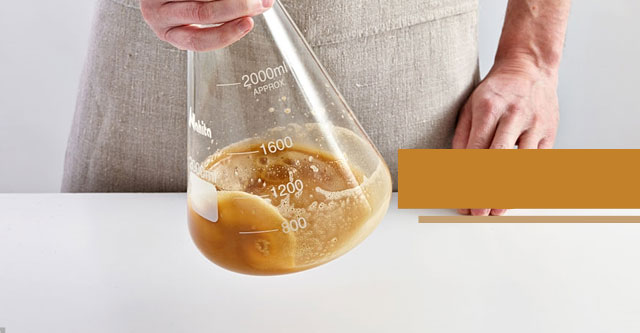Techniques to your own beer at home

HOW TO MAKE A STARTER
One package of White Labs yeast within proper date ranges will work for any 5-gallon batch of beer of any gravity. The chart below shows recommendations for advanced homebrewers. White Labs Pitchable Yeast is made to contain over 100 billion yeast cells. The PurePitch packages contain a minimum of 40 mls, with actual volumes ranging from 40 to 50 mls. Lag times are typically between 12-24 hours for a normal strength brew. A yeast starter is used to initiate cell activity or increase the cell count before using it to make your beer. The yeast will grow in this smaller volume, usually for 1-2 days, which then can be added to 5 gallons of wort. While a starter is not always necessary, White Labs recommends making a starter if: - the Original Gravity is over 1.050, - the yeast is past its "Best Before" date, - you are pitching lager yeast at temperatures below 18C0 (65F0), - a faster start is desired. PROCEDURE: In a medium sauce pan, add 1 liter (2 pints) of water and 120g. (1/2 cup USA) Dried Malt Extract (DME). Mix well and boil the solution for about 10 minutes to sterilize. Cover and cool the pan to room temperature in an ice bath. This will give you a wort of approximately 1.040 OG. Keeping the Original Gravity low is important because you want to keep the yeast in its growth phase, rather than its fermentation phase. The fermentation phase will create alcohol which can be toxic to yeast in high concentrations. Pour the wort into a sanitized glass container (flask, growler, etc.) and pitch the vial of yeast. Cover the top of the container with a sanitized piece of aluminum foil so that it is flush with the container, but will still allow CO2 to escape. Vigorously shake or swirl the container to get as much oxygen dissolved in the solution as possible. Keep the starter at room temperature for 12-18 hours on a magnetic stir plate, or occasionally shaking it to keep the solution aerated. You probably won’t see any visible activity, but the yeast is busy taking up the oxygen and sugars in the solution and growing new cells. After 18 hours, the yeast will have consumed all of the nutrients and oxygen in the starter. Switch off the stir plate or discontinue shaking and it will form a milky white layer on the bottom of the container as the yeast flocculates. If you are not planning on pitching the yeast right away, you can store it in the refrigerator with the foil still in place. When you are ready to brew, decant off most (80%) of the clear liquid from the top, being careful not to disturb the yeast layer below. Once the yeast and your wort are at approximately the same temperature, rouse the starter yeast into suspension with the remaining malt solution and pitch the yeast slurry into your wort. Typical Starter Volumes for 20 liters (5 gallons): To activate the yeast: 0,5L (1 pint) with 60g. (1/4 cup USA) of DME To revitalize yeast past its Best Before Date: 1L (2 pints) with 120g. (1/2 cup USA) of DME To brew a high gravity beer: 1L (2 pints) with 120g. (1/2 cup) of DME To brew a lager beer, starting fermentation 10-13°C: 2L (4 pints) with 240g. (1 cup USA) DME ***More specific information: http://www.pinta.it/download/6f0f9c8_comefareunostarter.pdf
